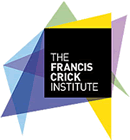This 4-year PhD studentship is offered in the labs of Dr Neil McDonald and Nate Goehring based at the Francis Crick Institute (the Crick).
The vast majority of cells are functionally polarized along at least one geometric axis, which enables them to migrate across developing embryos, establish complex morphologies within tissues, and divide asymmetrically to yield daughter cells with distinct fates. Loss of polarity can severely impact cell fate specification, proliferation control and self-renewal during stem-cell like divisions, epithelial to mesenchymal transitions, and metastasis. Mutations in polarity-related molecules are linked to cancer and active programmes are in place to develop therapeutics based on manipulating the polarity-related pathways.
In animal cells, a central player in cell polarisation is the polarity kinase atypical protein kinase C (aPKC), which is responsible for the spatial regulation of numerous pathways. In particular, its ability to modify the membrane association of various substrates enables the generation of asymmetric and distinct functional membrane domains that define the polarity of the cell. Yet despite its fundamental role in polarising cells, we are only beginning to understand how this kinase is regulated in time and space or how it selectively targets diverse polarity substrates.
Work from our labs has shown that aPKC function is tightly linked to its ability to form dynamic complexes with other polarity proteins, including scaffolding proteins Par6, Par3 and the small GTPase Cdc42, which can modulate both its membrane targeting, its overall localisation, and kinase activity [1, 2]. We have also developed new tools to manipulate aPKC in live cells [1, 3] and identified docking motifs that modulate substrate recognition [4, 5]. Recent work suggests that distinct multi-component PAR complexes show highly specific patterns of substrate selectivity. The key next step will be to develop multi-scale analysis methods to link detailed molecular behaviour described in vitro to system-level quantitative readouts of PAR protein behaviour in polarized cells, and ultimately to disease- and development-relevant phenotypes.
Through this multi-disciplinary project, we aim to develop a toolkit to identify key states of the PAR complex, characterise these states via enzymatic and structural techniques in vitro to understand how modes of binding and molecular configuration relate to enzymatic activity, and selectively visualise and manipulate these states in vivo using both cell culture and live embryos (C. elegans) to identity their roles in cell polarisation. This analysis will be coupled to mass spectrometry to reveal how manipulation of specific PAR complex states and/or specific interaction motifs affects phosphorylation of potential aPKC substrates. While details of the project will be decided in consultation with and tailored to the interests and skillset of the candidate, key technologies may include nanobodies, crystallography and/or cryo-EM, protein purification and synthetic reconstitution, enzymology, CRISPR, and quantitative live cell imaging / image analysis.
Candidate background
The ideal candidate will have a strong interest in bridging fields of biomedical research and be comfortable working across the spectrum of biological scales. We expect candidates to have a degree and/or background in biochemistry or similar with experience in structural and/or cell biology. Due to the joint nature of the post, an open, collaborative, and highly self-motivated personality is essential.
Talented and motivated students passionate about doing research are invited to apply for this PhD position. The successful applicant will join the Crick PhD Programme in September 2021 and will register for their PhD at one of the Crick partner universities (Imperial College London, King’s College London or UCL).
Applicants should hold or expect to gain a first/upper second-class honours degree or equivalent in a relevant subject and have appropriate research experience as part of, or outside of, a university degree course and/or a Masters degree in a relevant subject.
APPLICATIONS MUST BE MADE ONLINE VIA OUR WEBSITE https://www.crick.ac.uk/careers-and-study/students/phd-students BY 12:00 (NOON) 23 March 2021. APPLICATIONS WILL NOT BE ACCEPTED IN ANY OTHER FORMAT.

 Continue with Facebook
Continue with Facebook



